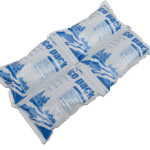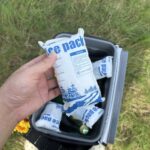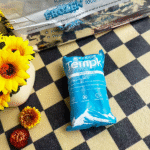Dry ice container dry ice pack solutions are the backbone of modern cold chain logistics. Whether you ship vaccines, gourmet desserts or biological samples, understanding how to use these ultra cold materials safely and efficiently can make or break your deliveries. This comprehensive guide answers the most pressing questions about dry ice containers and dry ice packs, incorporating the latest 2025 الاتجاهات, regulations and industry innovations. In the next sections you’ll learn how dry ice works, how much to use, how to package it correctly, and why the market is evolving so rapidly.
Determine the right amount of dry ice for different products and shipment durations, keeping payloads safe without wasting refrigerant.
Select the best container or pack format (كتل, pellets or wraps) based on your cargo and transit time.
Understand regulations and safety rules under DOT and IATA, including labeling, weight limits and packaging requirements.
Compare dry ice to gel packs and phase change materials (PCMS) for temperature range, reusability and sustainability.
Explore 2025 trends and market dynamics shaping the dry ice industry—from CO₂ supply challenges to sustainable production and hybrid cooling systems.
What is Dry Ice and How Do Dry Ice Containers & Packs Work?
Dry Ice Basics: From CO₂ to Ultra Cold Delivery
الجليد الجاف هو الشكل الصلب من ثاني أكسيد الكربون (co₂). على عكس الجليد المائي, it doesn’t melt; هو - هي subledlimates directly into a gas. At atmospheric pressure it maintains an astonishing temperature of –78.5 °C (-109 درجة فهرنهايت). This ultra cold temperature allows dry ice to keep vaccines, biological samples and frozen foods well below freezing for days. Because it converts from solid to gas rather than liquid, shipments stay completely dry—a key advantage when shipping perishable items that shouldn’t get wet or soggy.
Dry ice containers and dry ice packs are purpose built to harness this property. A dry ice container is a sturdy, insulated box—often made of high density polyethylene (HDPE) or expanded polystyrene (EPS)—that holds bulk dry ice blocks or pellets. It has ventilation ports to let the CO₂ gas escape and thick walls to slow sublimation. حزم الثلج الجاف, على الجانب الآخر, are smaller pouches or wraps containing dry ice pellets or slices. They are designed to fit around products, providing targeted cooling without the bulk of a large container.
Sublimation Explained
When dry ice absorbs heat from the surrounding environment, it doesn’t melt; انها تسام. Sublimation occurs when a solid turns directly into a gas without passing through a liquid phase. Because there is no water involved, the only by product is CO₂ gas. This gas must be vented from the container to prevent pressure buildup, which is why dry ice shippers use vented lids or breathable pouches. Proper ventilation is not just a best practice—it’s a safety requirement.
Why Containers and Packs Matter
ال شكل of dry ice makes a big difference in performance. Large blocks sublimate more slowly, making them ideal for long shipments or bulk goods. Pellets and nuggets offer a larger surface area and therefore cool quickly but disappear faster. Thin slices and custom cuts provide a balance of coverage and duration, fitting neatly into packaging systems to reduce empty space and improve efficiency. Selecting the right format helps you manage sublimation rate, cooling power and overall cost.
Choosing the Right Amount: ما مقدار الجليد الجاف الذي يجب أن تستخدمه?
Rough Guidelines for Different Payloads
The amount of dry ice you need depends on the product, the transit time and the level of insulation. Overusing dry ice wastes money, while underusing it risks thawing. Several sources offer rule of thumb recommendations:
الأدوية & اللقاحات: Use about 5-10 رطل (2.3-4.5 كجم) لكل 24 hours for ultra cold vaccines and biologics.
المأكولات البحرية & اللحوم: يستخدم 1–2 lb (0.45–0.9 kg) per day for smaller shipments of seafood or premium meats. Bulk shippers might double this amount for large containers.
وجبات مجمدة & الحلويات: A moderate 2-3 رطل (0.9–1.4 kg) per day is typically enough to keep frozen meals or ice cream solid for up to 72 ساعات.
General guideline: For overnight shipments, استخدم half the payload weight in dry ice; for two day shipments, use the same weight; and for three day shipments, يستخدم 1.5 مرات the payload weight.
These recommendations can vary with container insulation quality and ambient conditions. Always plan for extra dry ice when shipping during hot summer months or over long distances.
Formula for Estimating Dry Ice Needs
One simplified formula used by many carriers is:
الجليد الجاف (رطل) ≈ (Transit Time in hours ÷ 24) × (Average consumption rate per day)
If your transit time is 36 hours and you need 5 lb per day for vaccines, the calculation is (36/24) × 5 = 7.5 رطل. Rounding up to 8 lb ensures a safety margin. You should also account for the sublimation rate, عادة 3-8 % per day depending on how well your container is insulated.
Best Practices for Packing Dry Ice Containers and Packs
Step by Step Packing Procedure
Pre condition the container. Chill your box or cooler before adding dry ice to reduce thermal shock and slow sublimation.
Place dry ice at the bottom or top depending on your goal. Placing it في الأعلى lets cold air sink through the shipment, ضمان التبريد المتساوي. Placing it أقل can help maintain a cold base while reducing the risk of direct contact.
Wrap or separate products. Use cardboard or foam separators to prevent direct contact with dry ice; prolonged contact can damage products or freeze sensitive items.
Fill empty space. Minimize voids with bubble wrap, insulating foam or additional dry ice slices to keep cold air circulating efficiently.
Seal correctly but allow gas to escape. Use tape to close the container, but never make it airtight; venting channels or holes are critical to release CO₂ gas and prevent pressure buildup.
التسمية بوضوح. Mark packages with “Dry Ice” or “Carbon Dioxide, Solid” and include the net weight and “UN 1845” hazard class. Regulatory agencies require this labeling.
ارتداء معدات الحماية. Always handle dry ice with insulated gloves and eye protection to avoid frostbite or cold burns. Work in a well ventilated area to avoid CO₂ buildup.
أخطاء شائعة لتجنب
Using sealed plastic bags للثلج الجاف. These can burst as the gas expands.
Failing to vent the container. A tightly sealed container can explode from CO₂ pressure.
Ignoring weight limits. Airlines restrict passengers to 2.5 كجم (عن 5.5 رطل) of dry ice per person without special paperwork. Commercial shipments may carry more, but each package cannot exceed 200 كجم الوزن الصافي للثلج الجاف.
Using generic boxes for long shipments. Non insulated boxes will result in rapid sublimation and product loss. Invest in purpose built dry ice containers for extended duration.
طاولة: Recommended Dry Ice Weight vs. Payload Weight & مدة
| Payload Weight (رطل) | Recommended Dry Ice for 24 hr | Recommended Dry Ice for 48 hr | Recommended Dry Ice for 72 hr | Practical Implication |
| 10 | 5 رطل | 10 رطل | 15 رطل | Enough for vaccines/samples (two day shipment) |
| 20 | 10 رطل | 20 رطل | 30 رطل | Adequate for frozen foods or ice cream for up to three days |
| 50 | 25 رطل | 50 رطل | 75 رطل | Typical for large meat or seafood shipments |
| 100 | 50 رطل | 100 رطل | 150 رطل | Used for palletized cargo and industrial shipments |
These numbers are starting points and should be adjusted for extreme weather, container insulation or particularly sensitive payloads.
Understanding Dry Ice Regulations and Compliance
DOT and IATA Hazard Classification
Dry ice is considered a فصل 9 مواد خطرة, requiring specific packaging, labeling and documentation. The proper shipping name is “dry ice” or “carbon dioxide, صلب,” and the identification number is و 1845. Packages must bear the Class 9 hazard diamond and indicate the net weight of dry ice.
Weight Limits and Documentation
For passenger airlines, the International Air Transport Association (IATA) allows travelers to carry up to 2.5 كجم (5.5 رطل) of dry ice per person without additional paperwork. If you exceed this amount, you must file a dangerous goods declaration and follow more stringent packaging requirements. Commercial shipments can carry up to 200 كجم of dry ice per package.
Packaging and Ventilation Requirements
Containers must be durable—using fiberboard, plastic or metal—and strong enough to withstand handling. لكن, they must also allow CO₂ gas to escape. Jerricans and steel drums are not suitable because they can explode when pressure builds. Airlines and carriers typically require polystyrene foam boxes or specially designed containers with venting ports, like those from AirSea USA that maintain temperatures below –20 °C and release gas safely.
Triple Packaging Rule for Biological Samples
When shipping infectious substances or certain biological products, you must use triple packaging: a primary watertight receptacle, a secondary watertight packaging with absorbent material, and a strong outer box. Each layer must be leak proof. The outer container should be labeled with the dry ice weight and hazard classification.
الجليد الجاف مقابل. Gel Packs vs. مواد تغيير المرحلة (PCMS)
Temperature Range and Performance
Dry ice delivers extreme cold at -78.5 درجة مئوية and keeps products frozen for 48-72 ساعة. حزم هلام, على النقيض من ذلك, maintain temperatures in the 0 - 10 درجة مئوية range and are ideal for chilled rather than frozen goods. PCMs are engineered to hold narrow temperature bands—common ranges include 2-8 درجة مئوية for refrigerated items or –20 °C للبضائع المجمدة.
Reusability and Sustainability
Gel packs and PCMs can be reused multiple times as long as the packaging remains intact. الجليد الجاف, لكن, sublimates and is single use; once it’s gone, you need more. PCMs have higher upfront costs but offer long term savings and reduce hazardous materials handling. في المقابل, dry ice is cheaper per shipment and widely available, though its production relies on CO₂ sources, which carry environmental impacts.
Regulatory Considerations
Gel packs and most PCMs are classified as non hazardous, which simplifies shipping and reduces paperwork. Dry ice requires hazardous materials training, labeling and sometimes dangerous goods declarations. Carriers such as FedEx or UPS set additional rules that shippers must follow, including weight limits and packaging standards.
طاولة: Comparing Dry Ice, Gel Packs and PCMs
| طريقة التبريد | نطاق درجة الحرارة | مدة | فئة الخطر | إعادة الاستخدام | أفضل حالات الاستخدام |
| الجليد الجاف | -78.5 درجة مئوية (CO₂ الصلبة) | 48-72 ح | فصل 9 خطرة | Single use | Ultra cold shipments: اللقاحات, البيولوجيا, اللحوم المجمدة |
| حزم هلام | 0-10 درجة مئوية (water based) | 12–24 h | Non hazardous | قابلة لإعادة الاستخدام | Chilled foods, ينتج, some vaccines |
| PCMS | –20 °C or +2–8 °C (custom) | 24-96 ح | Non hazardous | قابلة لإعادة الاستخدام | اللقاحات, biologics requiring narrow temperature bands |
Which Should You Choose?
If your products must remain frozen (على سبيل المثال, بوظة, certain vaccines or cell therapy products), dry ice is the gold standard. Gel packs are excellent for refrigerated but not frozen goods like prepared meals or produce, and they offer lower shipping costs and simpler handling. PCMs occupy a middle ground: they provide التحكم في درجة الحرارة الدقيقة and can reduce dry ice consumption when combined in a hybrid system. Many shippers are now mixing PCMs with smaller amounts of dry ice to extend hold times while reducing hazardous materials.
Innovations and 2025 Trends in the Dry Ice Industry
Market Dynamics: Demand vs. Supply
Demand for dry ice has been rising about 5 % per year, yet CO₂ supply growth is just 0.5 % سنويا, creating a persistent shortage and price volatility. Spot prices can spike as high as 300 % during supply crunches. Despite these headwinds, the global dry ice market was valued at دولار أمريكي 1.54 مليار في 2024 and is projected to reach دولار أمريكي 2.73 مليار من قبل 2032, أ compound annual growth rate of 7.4 %. Growth is driven by food shipping, biologics and vaccines, and industrial applications like blasting and welding.
Industry Responses to Shortages
To counter supply issues, manufacturers are building localized production hubs and exploring on site CO₂ capture at facilities like food processing plants. Shippers are diversifying their strategies by combining dry ice with phase change materials and improving insulation to stretch each pound further. Long term supply contracts are also replacing spot buying, giving priority access to critical sectors.
Sustainability and Bio Based CO₂
There is growing pressure to reduce the carbon footprint of dry ice production. Most industrial CO₂ is fossil based, لكن bio ethanol plants offer a more circular source. During fermentation, bio ethanol producers capture high purity CO₂ that can be purified and turned into dry ice. In the UK, على سبيل المثال, the Ensus bio ethanol plant produces as much as 30–60 % of the country’s CO₂ supply. لكن, geopolitical issues and trade policies threaten these operations, showing the fragility of supply.
Alternatives and Hybrid Systems
While dry ice is indispensable for ultra cold shipments, alternatives are gaining traction. Gel packs and PCMs provide narrow temperature ranges for less critical goods, mechanical refrigeration systems supply active cooling, and improved insulation reduces the amount of dry ice needed. These alternatives are not replacing dry ice but are being layered in strategically to reduce reliance and support sustainability goals.
Sector Specific Trends
طعام & المشروبات: Shippers are using thinner slices and pellets for rapid cooling on processing lines, while investing in high performance insulated boxes to cut sublimation losses.
الأدوية & التكنولوجيا الحيوية: Barrier technologies and real time monitoring are being tested to prevent supercooling and to track payload conditions. Hybrid shipments using PCMs for less temperature critical medicines are becoming popular.
Industrial & Welding: Contractors are investing in local pelletizing capacity to secure supplies and avoid being deprioritized during shortages.
Real World Applications and Case Studies
مثال 1: Shipping Gene Therapy Vectors
Gene therapy products often require temperatures below –60 °C to maintain viral vector stability. A biotech company used a dry ice container with blocks and pellets layered together. By pre conditioning the container and filling empty spaces with custom dry ice slices, they maintained the required temperature for 72 ساعات during international transit. Temperature monitors showed a range of –65 °C to –70 °C, ensuring product integrity without supercooling.
مثال 2: Gourmet Ice Cream Fulfillment
An artisanal ice cream business needed to ship 50 tubs to customers across the country. They selected a container with an insulated shell and used 30 رطل من الثلج الجاف for each 20 lb shipment, following the rule of 1.5 times the payload weight. They added foam spacers to minimize voids and inserted small gel packs around the edges to preserve shape. النتيجة: customers reported ice cream arriving solid after two days in transit, even in midsummer conditions.
مثال 3: Clinical Trial Samples
A clinical research organization shipped blood samples requiring a 2-8 درجة مئوية range. Instead of dry ice, they used a PCM shipper combined with a small dry ice pack to cool the payload quickly. بعد 24 ساعات, the PCM maintained temperatures between 3–4 °C while the dry ice had fully sublimated. The hybrid approach simplified compliance and minimized hazardous handling, providing an efficient solution for the trial.
الأسئلة المتداولة
س 1: كم من الوقت يستمر الجليد الجاف?
عادة ما يستمر الجليد الجاف 48-72 ساعة in a well insulated container, though the exact duration depends on the amount used and ambient temperature. A thicker container and pre conditioning can extend this period.
Q2: How do I dispose of dry ice after use?
Allow remaining dry ice to sublimate in a well ventilated area away from people or pets. Never place it in a sealed container or a trash bin. Once it has completely sublimated, you can recycle the packaging or reuse the container.
س 3: جاف آمن للتعامل مع?
Dry ice is safe when handled properly. ارتداء القفازات المعزولة, goggles and long sleeves to prevent frostbite. Never ingest or handle dry ice with bare hands. Ensure good ventilation to avoid carbon dioxide buildup.
س 4: Can I ship dry ice internationally?
نعم, but you must comply with IATA and local hazardous materials regulations, including weight limits, labeling and documentation. Check carrier guidelines and destination country rules before shipping.
س 5: ما هو الفرق بين عبوات الثلج الجاف وحزم الهلام?
Dry ice packs provide ultra cold temperatures and keep products frozen; gel packs maintain refrigerator temperatures and are safer to handle, suitable for chilled but not frozen goods.
نصائح ونصيحة عملية
During peak summer months, increase the amount of dry ice by 20–30 % and consider using reflective packaging to reduce heat transfer.
Use temperature monitors or data loggers inside the container. Real time tracking allows you to respond quickly if temperatures drift.
ابق متوافقًا by training shipping staff. Hazardous materials training reduces errors and penalties.
خطط للمستقبل for supply shortages. Secure supply contracts or consider hybrid cooling systems to reduce dependence on spot dry ice purchases.
للنصيحة: For e commerce companies shipping frozen foods during holiday season, a mix of dry ice pellets for initial chill and الطوب PCM for sustained cooling can cut dry ice consumption by up to 30 % مع الحفاظ على جودة المنتج.
2025: Looking Ahead
The dry ice market in 2025 is evolving rapidly. Supply shortages, price volatility and sustainability concerns are driving innovation. Companies are investing in localized production, exploring bio based CO₂ sources, and incorporating hybrid cooling systems. في نفس الوقت, regulatory attention is increasing as authorities emphasize safety and environmental impact. Shippers must adapt by improving insulation, mixing cooling technologies and staying compliant with evolving rules. The industry’s resilience will depend on collaboration between producers, shippers and regulators—ensuring that essential medicines reach patients, foods stay fresh and industrial processes operate smoothly.
Internal Link Suggestions
Check out our Ultimate Dry Ice Shipping Checklist for a step by step plan.
Explore our guide on Innovations in Cold Chain Logistics to learn about new sensors and AI tools.
Read our comparison of Insulated Shipping Containers to find the right container for your operation.
Discover Best Practices for Vaccine Shipping to maintain regulatory compliance.
Learn how to Recycle or Reuse Cold Chain Packaging for sustainable operations.
حول Tempk
Tempk specializes in cold chain solutions for the life sciences, food and logistics industries. We design and manufacture high performance insulated containers, dry ice packs and phase change materials. With decades of experience and a commitment to sustainability, we provide reliable cold chain systems that meet the latest regulatory standards. Our products are tested for thermal performance and durability, ensuring your shipments arrive in perfect condition. Learn more about our offerings and consult our experts to build a custom solution that fits your needs.
Ready to get started?
اتصال Tempk today to discuss your cold chain challenges and find the right mix of dry ice, gel packs and PCMs for your shipments. Our experts will help you design a compliant, cost effective solution that keeps your products safe from origin to destination.























